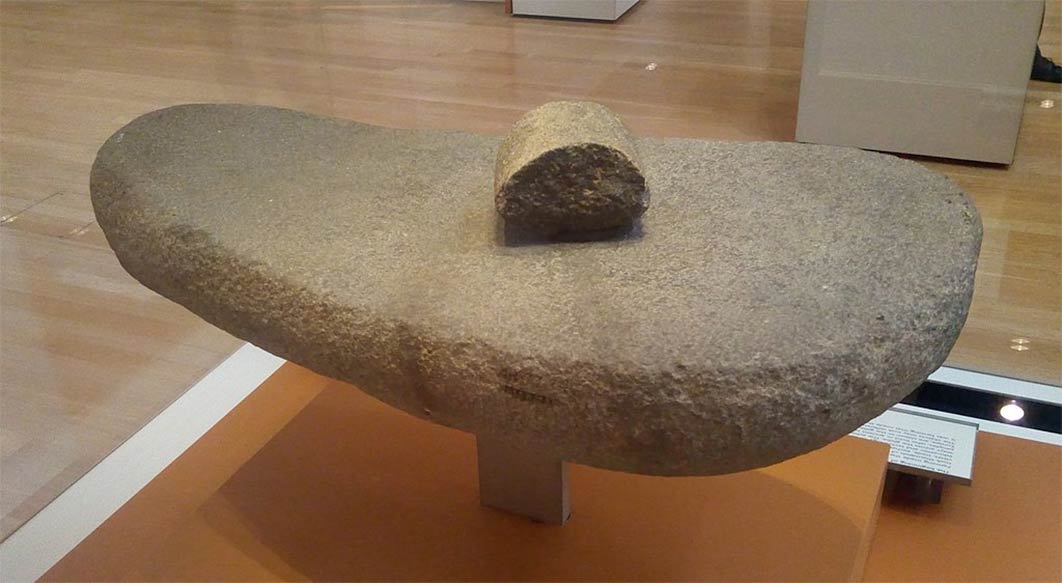
The Comet Hunters Of Göbekli Tepe
The ancient peoples of Anatolia and the Near East did not go unaffected by the terrible consequences of the Younger Dryas comet impact event, now known to have devastated the North American continent sometime around 10,800 BC. Indeed, there is powerful evidence that a Natufian settlement at Tell Abu Hureyra on the Middle Euphrates River, in what is today northern Syria, was subjected to an airborne blast triggered by the appearance in the low skies of a single fragment from the comet.
As evidence of this terrifying event, archaeologists working at Tell Abu Hureyra have uncovered nanosized magnetic and glass balls known as microspherules, as well as siliceous scoria-like objects made of melted glass. These are formed under incredibly high temperatures, in the range of 1,700 to 2,200 degrees Celsius. Microscopic objects of this kind are telltale signatures of an impact blast and are extremely unlikely to have been caused by natural phenomena such as lightning strikes. What is more, Tell Abu Hureyra is just 160 kilometers (99 miles) south of Göbekli Tepe and 520 kilometers (323 miles) north-northeast of Jericho, both of which emerged in the aftermath of the 1,200-year mini–Ice Age that followed the comet impact event.

Large and smaller stones used to grind cereal grains, Abu Hureyra, c. 9500–9000 BC. British Museum. ( Zunkir /CC BY-SA 4.0)
It must have been a similar story all the way across the Northern Hemisphere—a series of initial catastrophic events followed by aftershocks and further wildfires for hundreds of years after the initial impact event of around 10,800 BC. Epipaleolithic populations that would have taken the full force of the cataclysm included the Clovis culture of North America, the Magdalenian peoples of southwestern Europe, the Creswellian population of England, the Brommian culture of southern Scandinavia, the Swiderian groups that occupied various parts of central and eastern Europe, and, of course, the Natufian population of the Levant. All would have been devastated by the Younger Dryas event, with only the cleverest and most resilient human societies surviving to tell the tale.
The Usselo Horizon
An example of how effective the Younger Dryas impact event was in decimating human societies can be seen at Lommel in Belgium. Here thrived many settlements of the Federmesser tradition. They were an advanced culture with its own unique tool-making industry that populated the Low Countries of Europe, including Belgium, the Netherlands, and Denmark, during the 2,000-year warm phase known as the Allerød interstadial, which followed the end of the last Ice Age, circa 13,000 BC. These people created symbolic art pieces and manufactured beautiful stone tools, some of which are among the most accomplished artifacts of the Epipaleolithic age. These are found with frequency in the thick loess, the windswept sandy soil left behind by the retreat of the ice sheets that had covered much of the Northern Hemisphere for tens of thousands of years. Yet immediately above the material evidence of these people’s presence at Lommel is an eight-centimeter (3.14 inches) layer of oily black material.
- Scrutiny of Göbekli Tepe’s Construction Reveals Celestial Secrets
- The Younger Dryas Impact Research Debate – Are We There Yet?
- Decoding Göbekli Tepe: Secret Society AND Space Observatory?
Known as the Usselo horizon, after a Dutch village in the eastern Netherlands where it was first identified, this ash layer has now been found on five continents, including North America. Here it covers Clovis period occupational layers and goes by the name of the black mat. Almost certainly, the Usselo horizon is a product of the burned ash and debris created by the wildfires that raged in the wake of the Younger Dryas impact event.

The Younger Dryas black mat at Murray Springs. (Courtesy of the Comet Research Group)
Yet in Lommel, Belgium—which I visited in 2015 with Dutch biochemist Johán Bert Kloosterman (1931–2016), the discoverer of the Usselo horizon—something quite disturbing was pointed out to me. Immediately below the black layer, the normally yellow loess is bleached white to a depth of around 45 centimeters (18 inches). According to Kloosterman, who sadly died shortly after our meeting, this bleaching was either caused by the effects of the acid rain created by the aerial debris from the wildfires or it was the direct result of an air blast directly above the area. (Kloosterman was at that time analyzing the chemical makeup of the Usselo horizon from a number of locations in Belgium and the Netherlands to determine a definitive answer to this mystery.) Either way, the effects on the Federmesser culture, as well as the local environment, remain visibly devastating, for in the soil immediately above the Usselo horizon no trace of their signature stone tools can be found. Instead, there is simply a sterile sandy soil, above which are much cruder stone tools unlike anything the Federmesser produced. Clearly, they had gone, their place taken by a much less sophisticated culture.




